Globalisation and technological advances accelerate change. Empowered by capital, it is often difficult to set directions as well as regulate pace. Architecture is no exception. It becomes more difficult to strike a balance between capital and value. The situation in which Vietnamese architecture now finds itself is one that appears to have blinded individuals to their singular will and interests. I spoke with Hoàng Thúc Hào, an architect who has a clear sense the situation facing Vietnam, reinterpreting its values and connecting them with the appropriate technology.
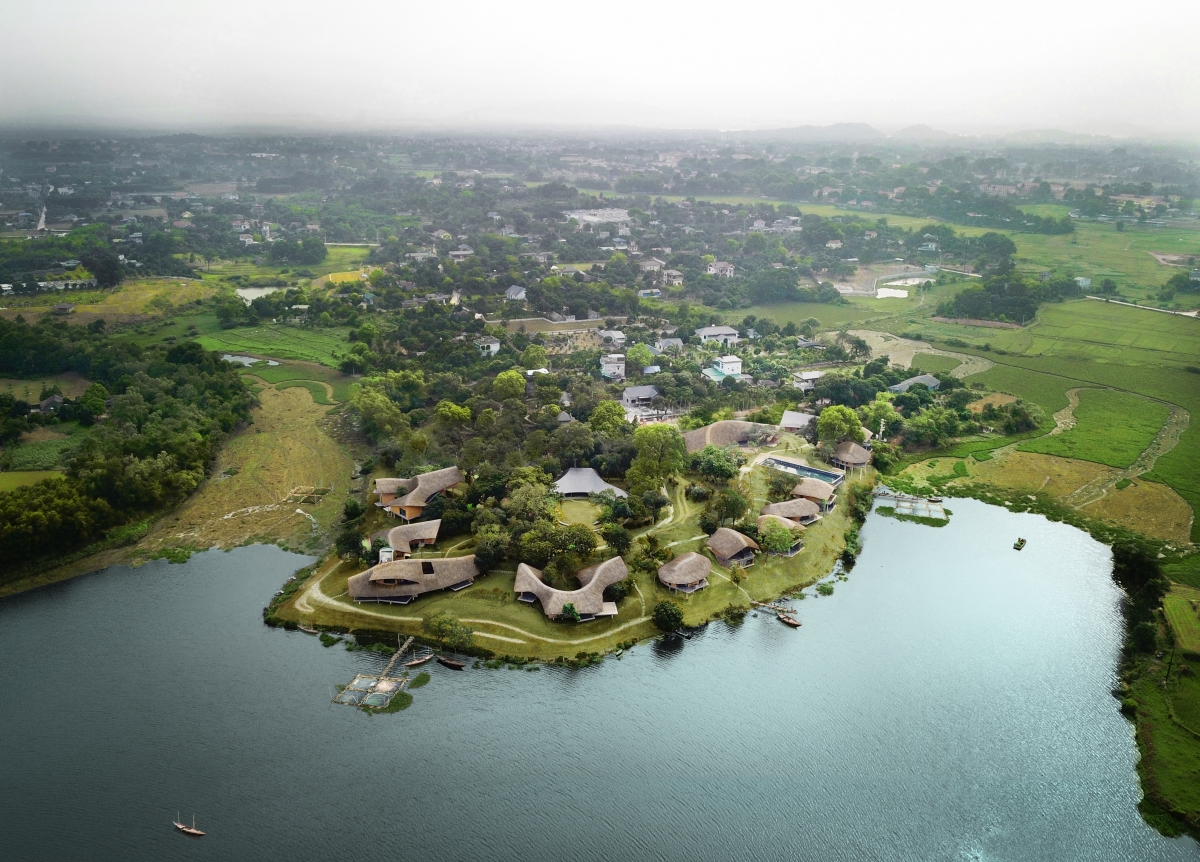
Jackfruit Village (2019) ⓒ1+1>2 Architects
interview Hoàng Thúc Hào principal, 1+1>2 Architects × Park Changhyun principal, a round architects
Park Changhyun (Park): The name of the studio is unique. What does 1+1>2 mean?
Hoàng Thúc Hào (Hoàng): It was named after the architectural philosophy pursued by the studio since it was established 25 years ago. In order to bring happiness to members of the public and wider society and to protect and generate cultural diversity in architecture, we study and practice architecture according to the philosophy of ‘happiness architecture 1+1>2’, a vernacular core value integrated with vanguard academic knowledge. This integration generates a common voice that is greater than the sum of its parts. It makes reference to a core philosophy of strengthening local identity, contributing to shaping quality of life, inspiring people, and including indigenous cultures.
Park: I can sense your affection for the region. Vietnam has various cultural and climatic characteristics determined by district due to the specific geographical characteristic. How is the architecture affected by these essential attributes?
Hoàng: Vietnam is a multi-ethnic country of 54 ethnic groups. It has a remarkable terrain stretching 1,650km from the north to the south, with unique climatic conditions in each region. For example, the mountainous areas in the northwest are extremely cold, sometimes hot and rainy, while the northern delta is humid and registers a large temperature difference. In contrast, the southern coast has a tropical climate in which rainy and dry seasons coexist. For thousands of years, the Vietnamese people have learned to create living conditions suited to each climate. Vietnam has accumulated a rich collective national wisdom, a significant legacy for the next generation. I believe that the role of architects today is to study, adapt, and cultivate these national cultural qualities in modern society.
Park: The idea of responsibility and role as an architect is also embedded in the actual projects. In the Jackfruit Village (2019) project in Hanoi, the mass was placed with respect to the location and shape of the existing trees. This minimised the damage to nature in accordance with the characteristics of the village in which it was intended to rest. It is very interesting to see the shape of buildings.
Hoàng: The village forms a rich and diverse ecosystem of water flow, rich soil, and diverse landscapes and habitats for living things. We set the starting point for the project as a traditional village structure in northern Vietnam. In general, the cultural buildings such as temples, sacred sites, and towers are located in the centre of the village. Similarly, in this project, public spaces such as ancestral houses and courtyards are located in the centre of the village on the highest point of the local terrain. People come here to play folk games, to meditate, attend festivals, and so on. Several houses have been arranged in accordance with the structure spreading from the centre, combining walking paths and gardens. This structure, which resembles the organisation of traditional villages, creates the appropriate amount of privacy and creates a friendly atmosphere by linking private and public spaces through green buffer spaces as an intermediary. Therefore, inheriting the wisdom of traditional architecture is to strengthen the local community and to preserve the Vietnamese spirit.
Park: You preserved a total of 76 trees, including 38 Jackfruit trees and 13 Pomelo trees. What does it mean to this project?
Hoàng: We have preserved all of the trees that already existed on the plot. Jackfruit and Pomelo trees are long-standing features of Vietnam’s agricultural history. Jackfruit, a representative local fruit tree, with large stems and dense branches, produces nutritious fruit. This tree, which grows well, can reach up to 15m in height, creating shady spots throughout the village. The shape of each village house and garden was determined by this tree, with a straw roof and canopy connecting the two. In the fruit-bearing season, the scent of jackfruit spreads throughout the village and the ripe fruit is harvested. The homeowner presents jackfruit to guests who gather to enjoy the unique sweetness of this tropical fruit. Jackfruit trees are not just fruit trees or landscaping plants, but bear the spirit of this town. I hope that it could become a place to make unforgettable memories for everyone who visits the Jackfruit Village.
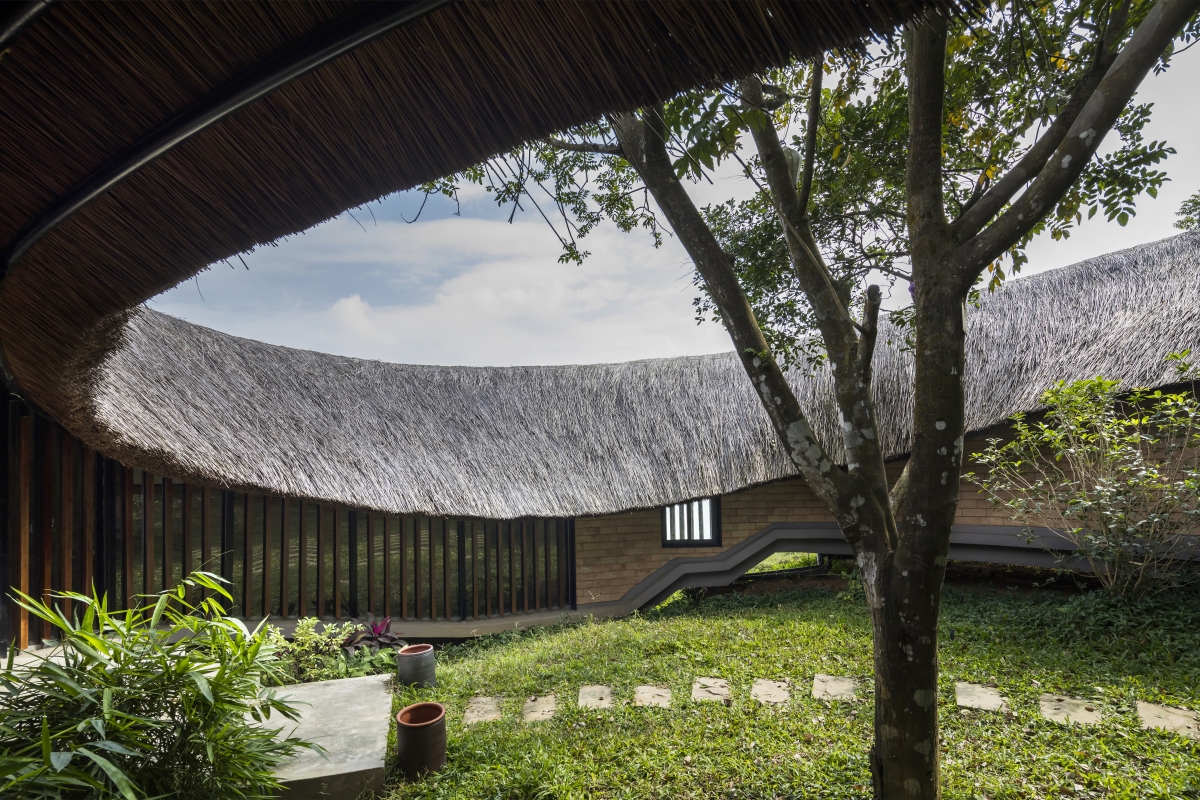
Jackfruit Village (2019) ⓒOki Hiroyuki
Park: The houses are not clustered in one place, but set at a certain distance from one other. In addition to considering wind channels and views, I think it is an arrangement that emphasises relaxation in nature while also enhancing individual privacy. What was important when designing this arrangement?
Hoàng: Metaphorically, my design is a jazz composition. This project has a vision not only to respect and enrich the ecosystem but also to protect the village structure. Drawing on the natural terrain changes the shape, slope, position, and height of the plot. The shape of each house is the same as the different sounds produced by different instruments. The form is shaped in an improvisatory, free manner like a jazz singer, and based on natural conditions. They create an unexpected variety of melodies while maintaining a strong general rhythm. It all combines to form a joyful and impressive whole run through with the rhythms of the trees and the earth.
Park: Trees scattered throughout the village hold together houses into a community. The streets passing through them form a network of villages, and the scale of this network seems to create a rural atmosphere.
Hoàng: Every corner of the promenade acts as a kind of frame that touches a pedestrian’s senses. By alternating open and closed spaces, Jackfruit Village expands. It is not a big village, but there are many layers of natural colours, floral scents, sounds of flowing water, and spaces that filled with the gentle hum of insects, so people can enjoy this atmosphere with all five senses. The village creates a lively and joyful symphony.
Park: As people make their way home along the streets, there is an outdoor garden in the front of each house. What is the role of this area and what activities take place here?
Hoàng: Outdoor gardens are buffer spaces, protecting a users’ privacy. At the same time, they serves as natural air purifiers and introduce fresh air into the house. This is where people find peace of mind, hang out with plants, and listen to earth breathing beneath their feet. Green areas are such an important presence in the Jackfruit Village. In the yard at the centre of the village, people plan and carry out outdoor activities such as sports, games, and performing arts events.
Park: When we come upon each house, we see that the rooms are kept as separate as possible and that they connect to the outer corridor, while the guest houses and artists’ bungalows minimise the area of their rooms according to their functions. All, however, have exterior terrace spaces facing nature. What considerations were foremost in your mind when designing the plan?
Hoàng: The arrangement of open and closed spaces was considered. To protect privacy and cope in a flexible way with the dynamic weather conditions, the degree of openness of functional areas has been adjusted logically and reasonably. In an open space, sky, earth, and trees are used as natural filters to block solar heat and refresh the air. Therefore, a living space is valuable, enjoyable and functional.
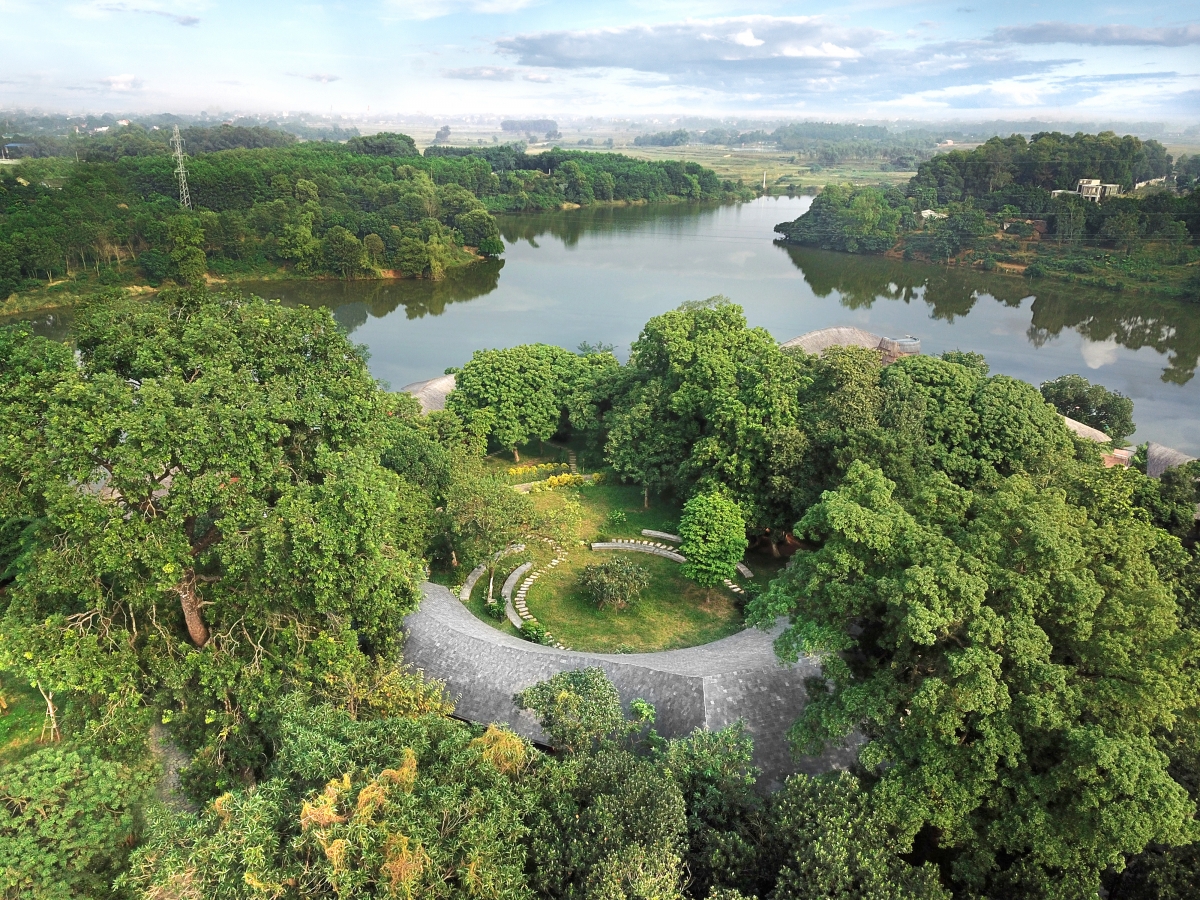
Jackfruit Village (2019) ⓒ1+1>2 Architects
Park: I understand that straw roofs were selected here in light of the elements of the traditional Vietnamese house. It was thought that this would provide various benefits and restore locality?
Hoàng: Traditions are not fixed but they are constantly changing. Regenerating locality does not simply pull the image of the old village into the modern era, but presents core values to suit the current context. This can also be seen through innovation in terms of materials and technology. To ensure the durability and building efficiency of thatched and mud houses, adobe bricks used in hot and dry climates were used in a particularly innovative design move. We worked with the construction team to build a brick moulding machine for on-site production. According to petrifaction technology, the land source is the main ingredient comprising 70% of the raw material. The use of construction waste not only reduces the budget but also contributes to environmental improvement. Through research and experimentation, adobe bricks made from earth excavation were observed to be of good quality and aesthetically attractive, as well as ensuring thermal insulation, anti-humidity, and termite resistance. The straw roofs of thatched houses have also been transformed into three-dimensional curved structures that can cope with the changes in the weather, as opposed to that found in the form of traditional roofs.
Park: What kind of synergy do you think people are now able to create in a village with locality?
Hoàng: During the construction process, it had the effect of creating jobs in neighbouring households and regions, which helped improve overall income and living standards. Developed in tune with the lakes, the project serves as a sustainable ecological park for local environments. In the long run, it will form a network with neighbouring areas as a place for residential education, in areas such as tourism, organic produce and construction. This has the effect of making residents proud of their country and raising awareness of preserving traditions. And it will set a precedent and establish a place of experimentation for renovations in other parts of Vietnam. There will be research on the Jackfruit Village in 10 or 20 years and we look forward to seeing positive results.
Park: There seems to be a lot of interest in urban housing in Hanoi, which includes the Jackfruit Village. Considering life in a city faced with a variety of problems, is there any possibility of linking the values of this project to urban housing?
Hoàng: In the urban context of Hanoi, we want to create a new urban village like that of the vertical villages, hanging villages, and so on. Unlike in Singapore and other countries, Vietnam’s living environment has problems with environmental pollution. Therefore, the building’s envelope should have a filtration effect that is capable of cleaning the air. To this end, it is necessary to raise the green space and water space in which people can walk and play at a high altitude. This is a lesson that leads to traditional Vietnamese villages and Jackfruit Village, and it is something to which we should pay more attention in the future.
Park: I am curious about the urban and national situation of planning the aforementioned vertical village and hanging village. In the face of rapid economic growth and population growth, what attempts are young architects in Vietnam making and what concerns are they voicing?
Hoàng: Vietnam has focused on commercial development and has neglected its heritage. Investor-led real estate profitable economic growth did not address ecological and traditional values. The short-term urban housing projects resulted in boxy, concrete skyscrapers, which isolate residents from the natural world and their traditional culture. It has become an infectious disease that has spread around the world, replicated not only in Vietnam and South Korea, but also in many other urban centres in countries across the planet. Everyone, including the architect, is trying to improve this situation. Due to advances in technology, we have designed ‘breathable’ buildings that respond flexibly to environmental and climate change. At the same time, new natural scenery and high-level green spaces were created to suit local culture. Innovative buildings that follow modern structures are converted into vertical villages, and Babylon into hanging villages. Specifically, in Hanoi, there is a large real estate development bank that builds skyscrapers of 30 ‒ 40 storeys, but we aim at 9 ‒ 15 in our buildings. I think the height of the building should be dictated by the proximity to nature. We also take vertical approaches to green areas and promenades to revive traditional villages in a new way.
Park: Judging from the interviews so far, you seem to be emphasising what people should pursue in architecture, especially in housing, in light of rapid global expansion and urbanisation. What posture do you hope to take in your urban architecture, one that is standardised across a concrete landscape?
Hoàng: Globalisation has created many opportunities and drawn every corner of our earth together. However, at the same time it has eliminated identity. The architectural image of urban, rural, and ethnic minorities has become monotonous and unremarkable. Concrete skyscrapers have proliferated throughout the country, along with contaminated workers’ houses such as livestock cages and slums. Rural areas and communities lack professional architects. There are two challenges for architects. The first is how to preserve the architectural identity of each city and region. The second is how architects design for rural and remote areas and develop architecture in line with their cultural values. Each region, from modern cities to remote rural areas, has an identity, local wisdom, and cultural heritage that can be maintained to this day. People still maintain their traditional core values. We define things like New York’s Central Park, Egypt’s Pyramid and Vietnam’s Hanoi Old Quarter as ‘sustainable surprises’. Our goal is to create a new sustainable surprise based on factors such as physical and cultural sustainability, structural diversity, intimacy with nature, and past and future sustainability. All of this generally celebrates cultural and ecological diversity and creative objectives, with an eye towards humans in relation to architecture, especially housing.
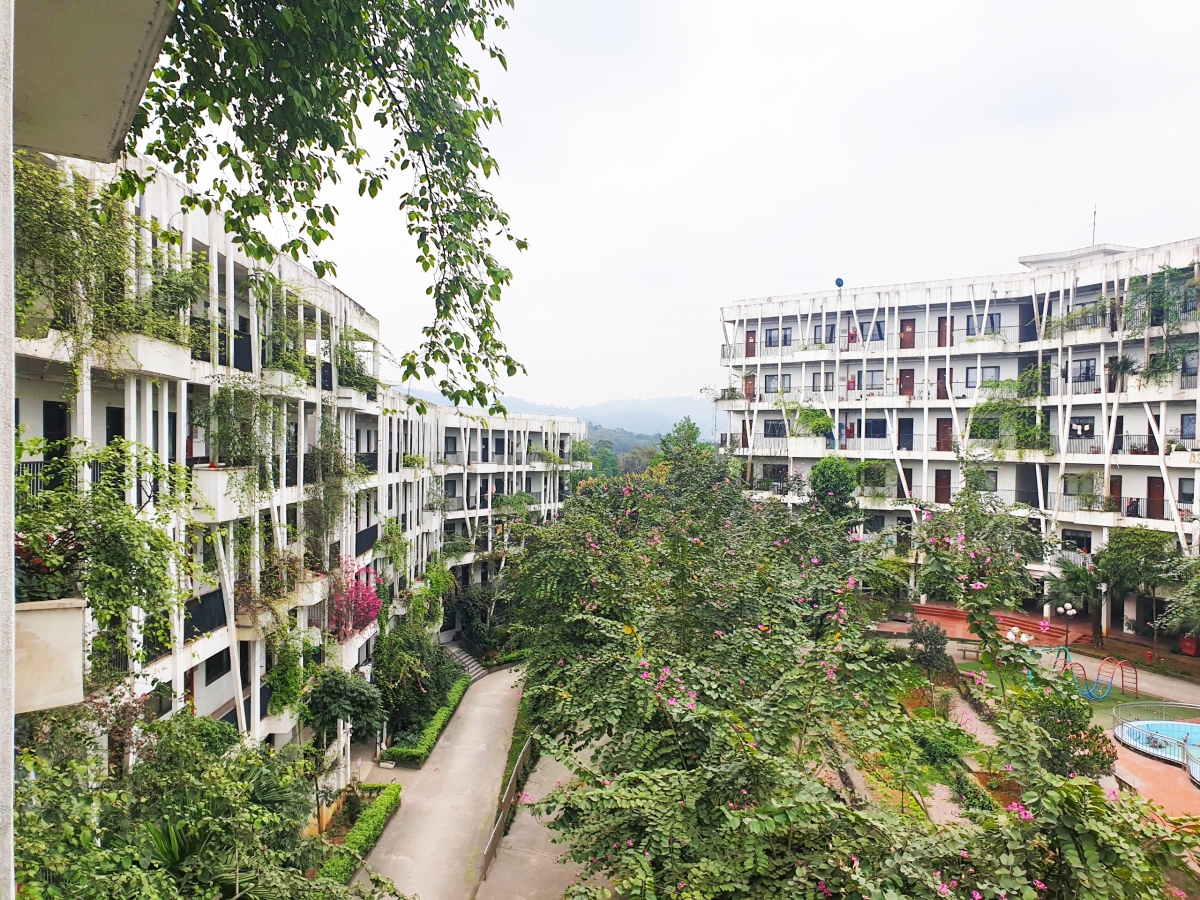
Lao Cai Workers’ House (2016) ⓒ1+1>2 Architects
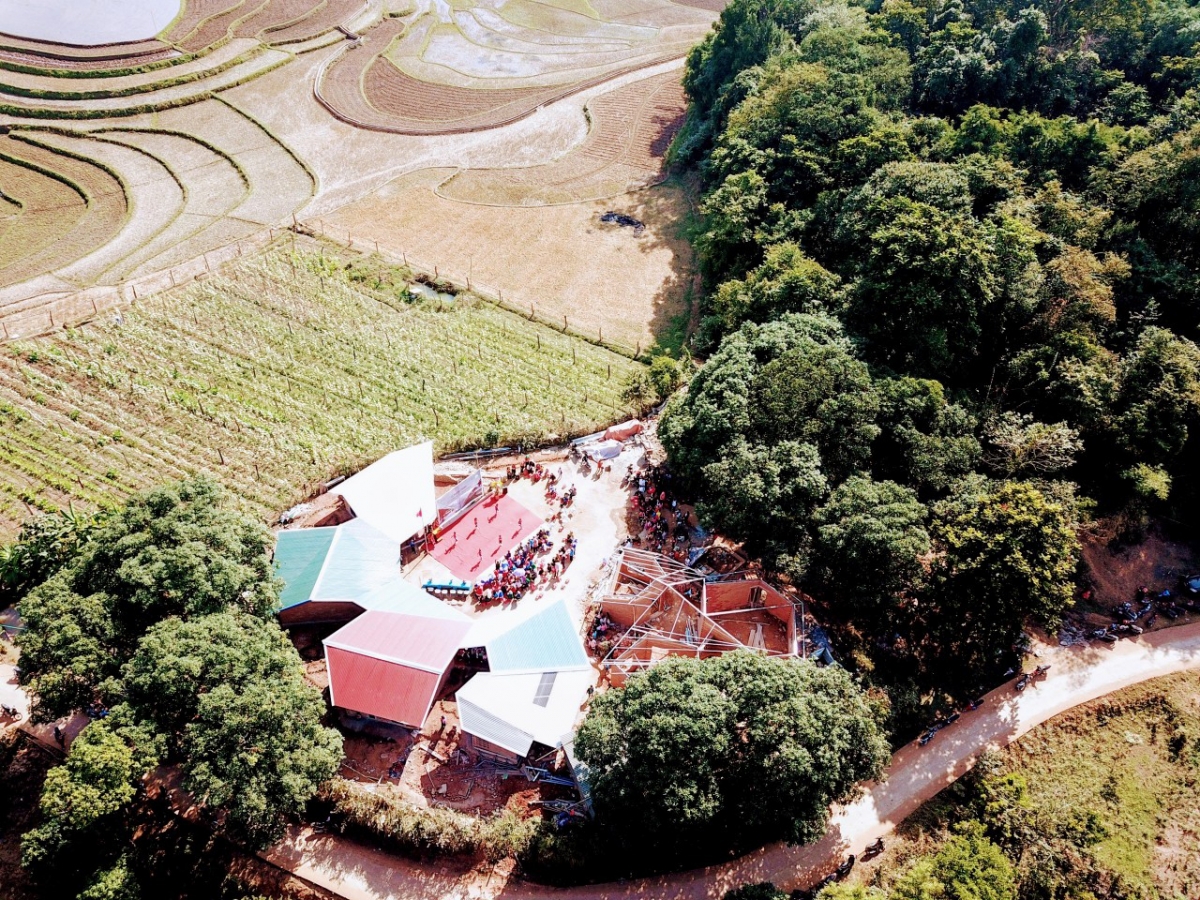
Na Khoang Primary School (2020) ⓒ1+1>2 Architects
112.com.vn





